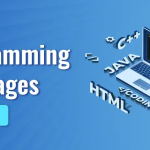
TikTok has remained among the top downloaded apps according to Statista. In 2022 TikTok recorded a stunning 672 million downloads. TikTok videos transformed the social media landscape by introducing short dances and unconventional Gen Z commentaries. The platform’s widespread popularity reflects key technological shifts over the last decade, including the transition from desktop to mobile, the preference for short-form videos among users, and the implementation of innovative advertising strategies.
So, people ask this question “How does TikTok know me so well?” and the answer from our perspective has always been the Data Science team at TikTok has nailed it by building a recommender system that works so well. Let’s see how Data Science fuels TikTok’s success.
What is the TikTok Algorithm?
The TikTok algorithm is a sophisticated system that employs machine learning and artificial intelligence to analyze user behavior and deliver personalized content recommendations. The TikTok algorithm is the brain behind the For You page (FYP), the curated feed of videos that greets you when you open the app. Unlike traditional social media feeds that mostly show you content from people you follow, the FYP is a personalized mix of videos from both creators you know and those you don’t, all chosen by an algorithm to keep you hooked.
How Does the TikTok Algorithm(Recommendation system)Work?
The exact workings of the algorithm are proprietary. However, the general principles of how it works are based on user experiences and insights provided by the platform. To give you more context recommender systems are built on a user-item matrix, this ideally is a table that has rows and columns. The rows represent users and the columns represent individual items, like on YouTube this would represent videos, on Spotify this would be songs.
Now the value in each cell would represent the interaction between the user and the Item, for example, Likes, watch time(did you finish the video), comments, and on platforms like Amazon this could include reviews and star ratings.
With this table, we can create users with similar interests and recommend songs, videos, products, etc based on what other users interacted with. Now back to TikTok …..
Machine Learning for Personalization:
TikTok’s machine learning algorithms process vast amounts of user data, including videos watched, engagement history, and interactions. These algorithms use this data to create a personalized profile for each user.
Machine learning models then predict which videos a user is likely to enjoy based on their historical behavior. This enables the system to continuously refine its understanding of user preferences.
Diverse Content Recommendations:
TikTok’s recommendation system aims to provide users with a diverse range of content to keep the For You Page engaging and varied.
This diversity includes popular trends, niche interests, and content from both well-established and emerging creators, ensuring that users encounter a mix of content that aligns with their preferences and introduces them to new trends.
Engagement Metrics:
TikTok places significant importance on engagement metrics such as likes, shares, comments, and watch time. Videos that receive higher engagement metrics are considered more interesting and are likely to be recommended to a wider audience. This emphasis on engagement ensures that the content suggested is more likely to resonate with users.
Real-Time Feedback Loop:
The recommendation system operates in real-time, continuously adjusting content suggestions based on immediate user feedback. If a user engages positively with a video, the system takes this feedback into account to refine subsequent recommendations. Similarly, if a user quickly scrolls past or skips a video, the algorithm adapts to avoid similar content in the future
Continuous Learning:
The TikTok recommendation system is designed for continuous learning. As user behavior evolves and new trends emerge, the algorithm adapts to ensure that content suggestions remain relevant and engaging over time. Continuous learning involves regularly updating machine learning models to reflect changes in user preferences and the evolving landscape of content on the platform.
Are you the next Data Scientist who will take TikTok to the next level?
Tech has enabled the onset and growth of careers in very unconventional domains. You can be the one earning a salary of $150k or more annually. Kickstart your journey into the highest-paying jobs of our generation by studying Data Science at Moringa. Send an email to admissions@moringaschool.com for more details.










